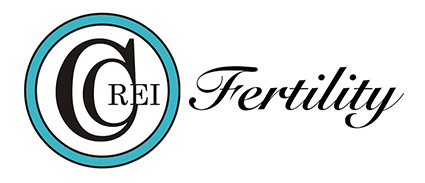Laboratory Procedures
Providing Advanced Fertility Treatment with a Warm Personal Touch
Our comprehensive services for the diagnosis and treatment of infertility are all performed on-site in our state-of-the-art facilities. Our nationally certified embryology lab operates year-round and employs three full-time embryologists and additional support personnel. Our andrology lab technologists have extensive experience to assist you with all your andrology and endocrine lab service needs.
Overview
Intracytoplasmic Sperm Injection (ICSI)
Within IVF, there are two different insemination techniques: standard insemination and ICSI insemination. Standard insemination is a procedure in which the eggs retrieved are maintained within their cumulus complex and are combined with sperm in the same culture dish. Because their cumulus complex is maintained, egg quality and maturity cannot be evaluated.
In order to perform ICSI insemination, the cumulus complex of the egg is removed and the egg maturity and quality are evaluated. Maturity of the oocyte is important because only mature eggs have the opportunity to fertilize. ICSI involves the insertion of a single sperm directly into the cytoplasm of a mature egg. ICSI is typically recommended if a patient has one or more of the following:
- Male factor
- Diminished ovarian reserve
- Advanced maternal age
- Previous poor fertilization results from standard insemination
Preimplantation Genetic Diagnosis (PGD)
Preimplantation genetic diagnosis (PGD) is a technique that can be used in conjunction with IVF to test embryos for genetic disorders prior to their transfer to the uterus. PGD makes it possible for couples with serious inherited disorders to decrease the risk of having an affected child. PGD also can be considered for couples experiencing repeat pregnancy loss due to genetic disorders, couples that already have one child with a genetic disorder and are at high risk of having another, and couples interested in family balancing.
PGD is performed using a high-powered microscope. A single cell is removed from each embryo on day three of development and tested for the genetic trait of interest. The unaffected embryos are identified, separated from the affected embryos, and transferred into the uterus.
Assisted Hatching
Assisted hatching is a technique where a small opening is created in the outer shell of the embryo (zona pellucida), which weakens the shell and improves the likelihood of successful hatching and embryo implantation. Indications for assisted hatching include advanced age, thick or pigmented zona, and previous IVF failures. This technique is typically performed with fresh multicell-stage embryos and all frozen embryos.
Embryo Grading
During IVF, the embryos are cultured for up to six days and receive quality grades each day. Egg Retrieval and Insemination Day 0
Egg maturity is important because a mature egg has the best chance of being fertilized. There are three different stages of egg maturation:
- Germinal vesicle (GV): The egg has not begun meiosis yet, so it is considered immature.
- Metaphase I (MI): The egg is in the first phase of meiosis; however, it is still not completely mature because it has not entered the second phase of meiosis. This kind of immature egg may mature after a couple of hours of temperature-controlled incubation.
- Metaphase II (MII): The egg is in the second phase of meiosis and is mature. Eggs at this stage of maturity are ready for fertilization.
Egg quality is graded on a good-fair-poor scale:
- Good
- Clear cytoplasm/normal shape
- Single distinct polar body
- Clear/thin zona pellucida
- Fair
- Slightly grainy cytoplasm/misshapen
- Fragmented/abnormal polar body
- Slightly pigmented/amorphous zona
- Cytoplasmic bodies
- PV debris
- Poor
- Dark/grainy cytoplasm/misshapen
- 1 polar body structure
- Pigmented/thickened zona
- Vacuoles
- PV debris
Fertility Preservation
Oocyte cryopreservation, or egg freezing, is a relatively new procedure in the field of assisted reproductive technologies. Overall, this technology increases a woman’s potential to have children later in life. Since the first successful pregnancy using egg freezing was reported in 1999, approximately 600 babies have been born. Currently, pregnancy rates are between 30 and 40 percent.
Egg Freezing
Egg freezing allows a woman to preserve her fertility until she is ready to start her family. During an egg-freezing cycle, a patient will go through many of the same steps that are involved in a typical IVF cycle: ovulation stimulation, ultrasound monitoring, and egg retrieval. After egg retrieval, the eggs will be cultured for a few hours and then frozen the same day for future use.
Embryo Freezing
Embryo freezing is a technique that is recommended when high-quality embryos remain after embryo transfer. These embryos remain frozen until the patient is ready to use them. If patients have completed their families, they have the option to donate these frozen embryos to research, another couple, or training; the embryos can also be discarded.


Follow Us!